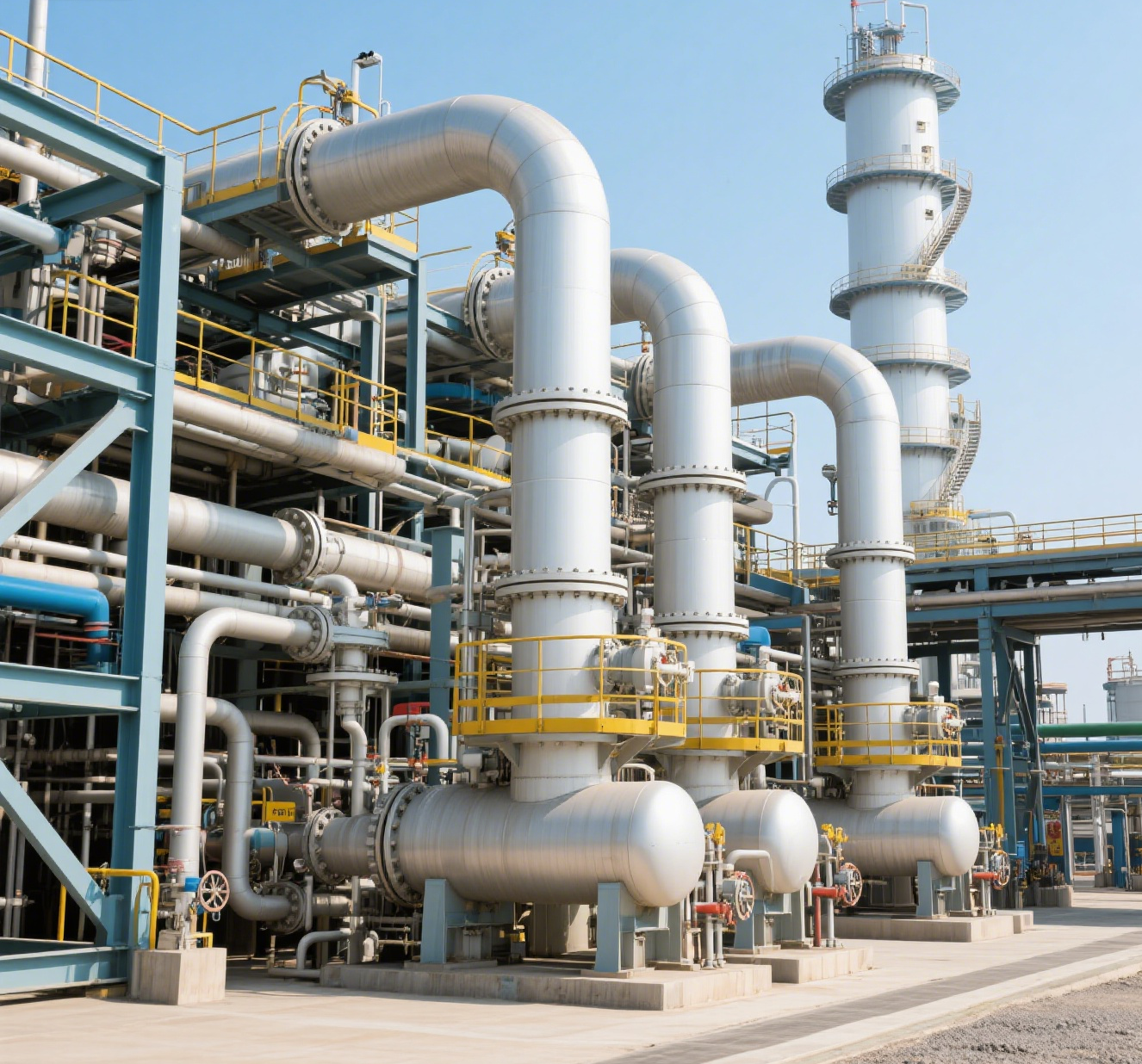Cascade Process in Natural Gas Liquefaction
Multi-Stage Refrigeration Mechanics
In the cascade process, LNG is produced in multiple steps of chilling which are applied to various refrigerants such as propane, ethylene and methane. These refrigerants span progressively colder temperatures reaching typically from the ambient down to the -160°C. By separating the heat transfer functions, this philosophy minimizes thermodynamic losses caused by wide temperature lifts. Its 3 stage configuration reduces the compressor loads by 40% compared to single stage and sustained the pressure less than 50 bar for safe operation. This staggered cooling cycle Separation also gives better control of gas-phase transitions, important to stabilise LNG methane content.
Energy Efficiency Benchmarking
Modern cascade systems achieve energy efficiencies near 35 kW per ton of LNG, a 22% improvement over early-generation designs. Key drivers include:
- Ambient temperature compensation algorithms reducing energy spikes by 12%
- Turboexpander retrofits cutting methane slip to <0.8%
- Predictive maintenance regimes boosting annual uptime to 93%
Arctic facilities typically outperform tropical installations by 9% due to lower baseline cooling loads, as demonstrated in 2021 thermodynamic research.
Case Study: Indonesia's Bontang Facility
The Bontang LNG plant is a typical example of cascade process adapted to humid tropical climates. Its 22.5 MTPA production is based on a three step system with ammonia-assisted pre-cooling that reduces the reliance on sea water cooling by 34%. The facility operates at 32°C average inlet temperature, but with monsoon-proof air fin coolers and this plant runs at specific energy consumption of 37 kW/ton with dynamic refrigerant adjustment. Post Retrofit – 15% reduction in flare gas volume from legacy benchmark data.
Single Mixed Refrigerant (SMR) Technology
Simplified Cycle for Offshore LNG
45 SMR - A single mixed refrigerant, SMR simplifies the liquefaction process for offshore by combining all the refrigerants into one fluid mixture and minimises the footprint by 40%. This simplified cycle is particularly well suited to floating LNG plants where space is at a premium. Contemporary SMR configurations reach 0.35 kWh/kg LNG for the specific energy consumption, while for the optimized refrigerant mixtures, serious energy savings are demonstrated.
AI-Driven Process Optimization
Advanced machine learning models optimize SMR cycles in real-time, adjusting refrigerant ratios to match fluctuating feed gas conditions. These systems analyze multiple process variables, achieving 22–35% efficiency improvements over manual controls. A 2023 implementation at a Southeast Asian floating LNG facility reduced liquefaction costs by $18/ton through predictive maintenance algorithms.
C3MR Hybrid Cooling Systems
Propane Pre-Cooling Fundamentals
Propane’s thermodynamic characteristics are employed to pre-chill the natural gas prior to the primary mixed refrigerant cycle in C3MR systems. In this pre-cooling step, gas temperatures are cooled down to around -35°C, thus reducing the amount of energy required in the next steps. Propane has a predictable boiling curve, allowing very good temperature control, which minimizes thermal stress on downstream equipment.
Thermal Efficiency vs SMR
C3MR systems demonstrate 22% higher thermal efficiency compared to SMR methods. In Arctic environments, this staged approach reduces compressor power consumption by 30-40% compared to single-cycle SMR units. The hybrid design also maintains 0.92-0.95 exergy efficiency across fluctuating conditions.
Qatar's North Field Expansion Project
Qatar’s North Field Expansion employs C3MR technology to add 48 MTPA of capacity by 2027. Project data reveals a 17% reduction in specific energy consumption compared to older SMR-driven facilities, achieving 98% liquefaction cycle continuity during field trials.
Dual Mixed Refrigerant Innovations
Parallel Refrigeration Configuration
Dual mixed refrigerant (DMR) systems employ two independent refrigerant circuits operating in parallel, enabling precise temperature control. This configuration improves energy efficiency by 15% compared to conventional single-loop designs, while reducing equipment stress during load fluctuations.
Arctic Climate Adaptation Features
DMR technology excels in extreme cold climates, with Arctic-optimized designs maintaining 92% liquefaction capacity even at sustained -40°C conditions. These systems outperform SMR plants by 28% in similar environments.
Modular Plant Implementation Trends
The compact nature of DMR systems has driven a 40% footprint reduction for modular LNG plants. Pre-fabricated skid-mounted units enable rapid deployment, achieving full operational status 80% faster than traditional setups, as detailed in modularization research.
Nitrogen Expansion Applications
Safety Advantages in Small-Scale LNG
Nitrogen’s inert properties enhance safety in compact LNG facilities, reducing combustion risks during gas handling. Its chemical stability prevents unintended reactions with hydrocarbons, while nitrogen blanketing systems lower explosion hazards by 40% compared to conventional methods.
Carbon Capture Integration Strategies
Nitrogen expansion pairs with carbon capture systems to reduce emissions, enabling precise control of exhaust gas mixtures. Recent advancements achieve 92% carbon capture rates without significant energy penalties.
Peak Shaving Facility Operations
Nitrogen’s rapid cooling capabilities prove critical in peak shaving applications, where LNG plants must quickly adjust output. Expansion turbines can ramp liquefaction capacity by 30% within 90 seconds, while reducing boil-off gas losses by up to 18% compared to mechanical alternatives.
Frequently Asked Questions
What is the cascade process in LNG liquefaction?
The cascade process in LNG liquefaction involves a multi-stage refrigeration process using different refrigerants to progressively chill the natural gas, reducing compressor loads and optimizing energy efficiency.
How does Single Mixed Refrigerant (SMR) technology differ from other LNG processes?
SMR technology simplifies the liquefaction process by using a single mixed refrigerant, making it ideal for offshore applications due to its reduced footprint and streamlined operations.
What are the benefits of using Dual Mixed Refrigerant systems?
Dual Mixed Refrigerant systems enhance energy efficiency by 15% through parallel operation of refrigerant circuits and offer precise temperature control, making them suitable for extreme climates.
Why is nitrogen used in small-scale LNG applications?
Nitrogen is used for its inert properties which enhance safety by reducing combustion risks and minimizing explosion hazards in gas handling and liquefaction processes.

